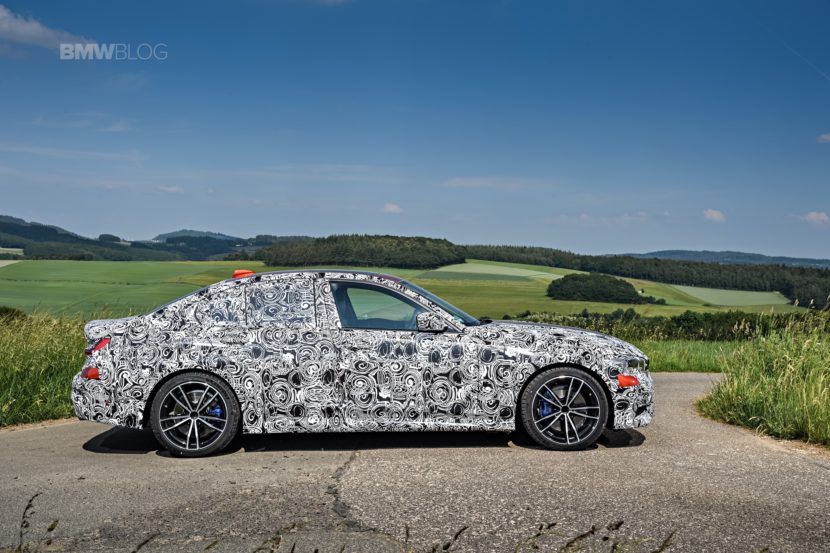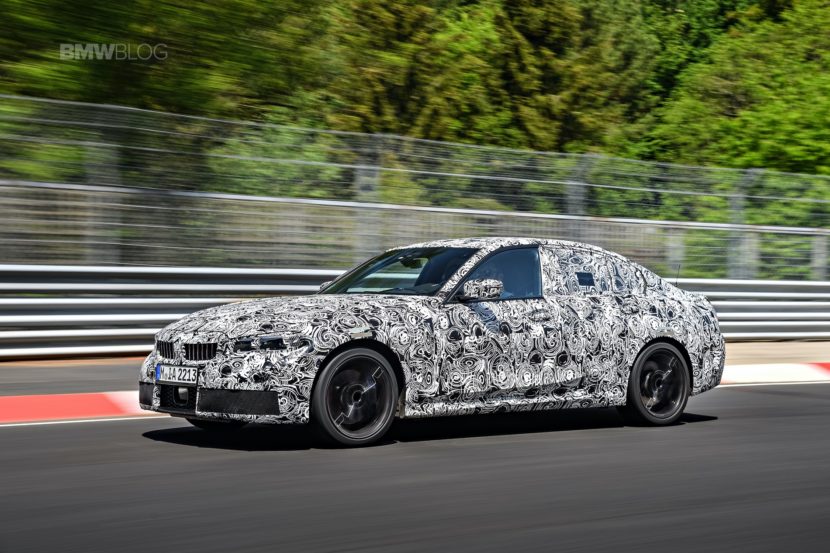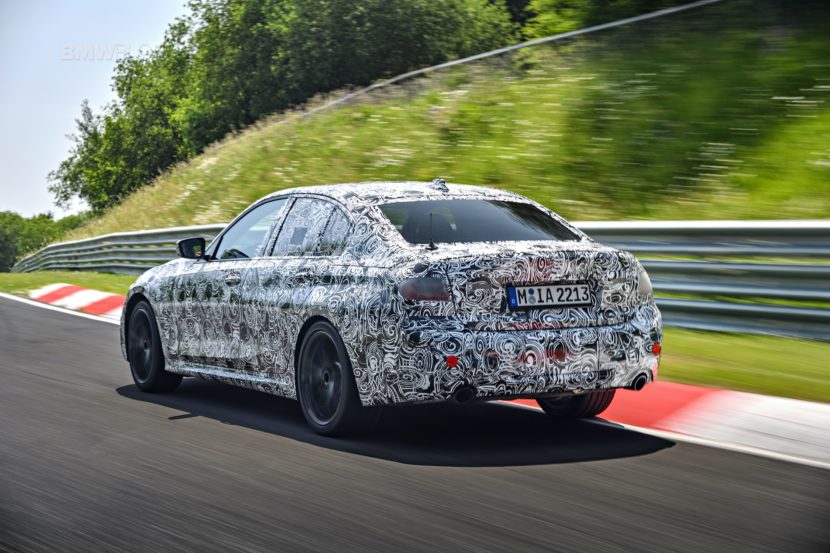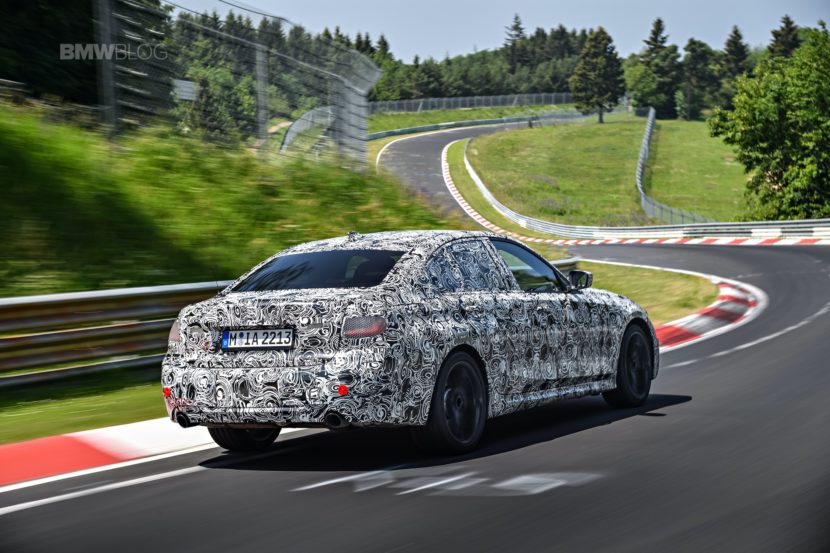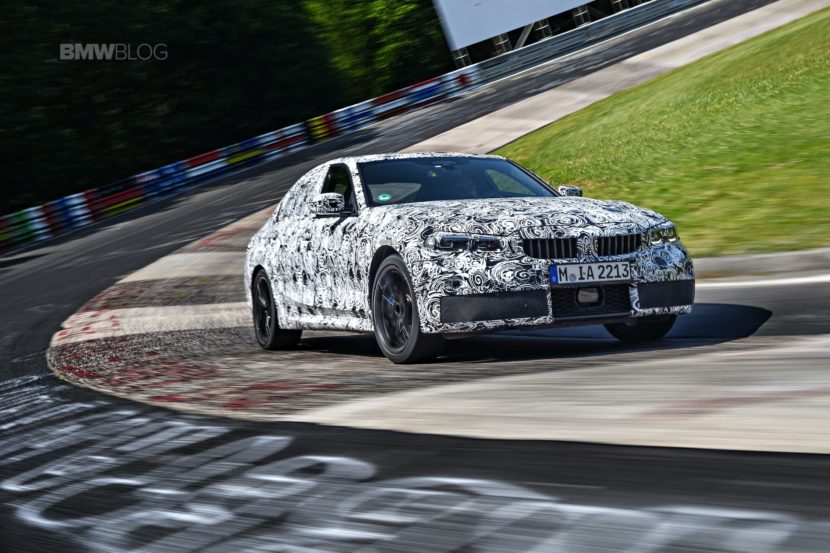Pre-production drives of the new G20-generation BMW 3 Series have just been released, giving us just a quick taste of what’s to come. Admittedly, these drives were of pre-pro 3 Series’ that don’t exactly represent the final product, though the final product will actually incorporate changes derived from what BMW learned from letting journos drive the prototype cars. However, there was one piece of tech from the new 3 Series that we found especially interesting, as did many of you readers, so we thought we’d break it down for you.
Since these drives came out, there have been a lot of questions about BMW’s lift-related dampers. Now, we weren’t at the press event and the BMW press release was a bit vague on how they work, so we’ve had to learn about these new dampers from other journos that were actually there to witness the tech briefing, on top of our own research. And from what we’ve learned, the new 3 Series should be dynamite.
For the new G20 3 Series, BMW wanted to get back to basics, in the way it drives. So rather than rely on adaptive dampers, speed-variable steering and multiple drive modes, BMW wanted the 3 Series to drive like a proper sport sedan without any of that. So it developed a new suspension setup that would be the 3er’s as-standard, passive suspension. Also, BMW claims that few customers actually paid for the adaptive dampers.
These new lift-related dampers feature both main and auxiliary springs and new internal hydraulic bump stops, which are capable of progressively increasing pressure inside the shock over bumps, while also progressively adjusting rebound. This new tech for the front and rear shocks also do slightly different things in the new 3 Series, with the fronts work on rebound while the rears work on compression. This is a BMW-first technology.
Essentially, this new suspension setup stages compression on both compression and rebound, allowing for a finer-tuned, more controlled ride, which will allow it to both absorb bumps better as well as handle better. And it seems to have worked well.
BMW applied this technology to two passive suspension setups, both regular and M Sport. Neither of which are adaptive, which is the way the car Gods intended. The setup that journalists sampled on the Nurburgring recently was the M Sport one. While it gets similar technology, the M Sport suspension, it’s 10mm lower and features a stiffer setup that doesn’t sacrifice comfort much.
“The suspension hardware means we’ve been able to increase the effective spring rate of the M Sport suspension quite a lot, so there’s now twice as big a gap in terms of handling response and body control between cars with standard suspension and M Sport suspension than before,” according to BMW 3 Series dynamics lead Jon Van As.
“But we’ve also been able to take initial, low-level damping interference away in the stiffer-sprung version, because we’ve got more progressive control available later in the suspension stroke. That actually makes the car’s ride flatter and more supple, because the suspension’s freer to work and to move to begin with; the body doesn’t jostle or fidget as much. Other manufacturers use ‘selective’ dampers in an attempt to achieve something similar, but those can ‘freeze’ when the suspension inputs pass a certain pretty arbitrary frequency — and when they really needn’t.”
While most engineers will rave about the car they’ve just developed to journalists about to test it, it seems as if neither BMW or Van As are being hyperbolic. According to Car and Driver, “Over the Nürburgring’s most abrupt attitude changes, they feel almost as miraculous as magnetorheological dampers in their ability to quell body motion.” That’s high praise indeed, as anyone who’s used magnetorheological dampers knows they feel almost magical.
Motor Trend also had darling things to say about the new 3 Series’ suspension setup. “Application driving dynamics boss Jos van As notes that the test cars are the “worst case for ride”—sport suspension and lowest-profile run-flat tires. Yet body motion control is impeccable, and the vehicle absorbs the sharpest impacts with trademark vintage-BMW suppleness. I can only imagine how cosseting the base car on taller sidewalls will feel.”
So BMW developed the new 3 Series suspension to be a sort of Goldilocks setup. It’s not too stiff, not too soft, nor does it have any settings to make it stiffer or softer, it’s just one suspensions setup that’s just right. Sure, adaptive dampers are available but, at least from the sounds of it, avoid them and get the passive dampers. If you want extra comfort, go for the regular suspension but if you want a lower, sportier ride, go for the M Sport suspension. That’s the way it’s supposed to be.



